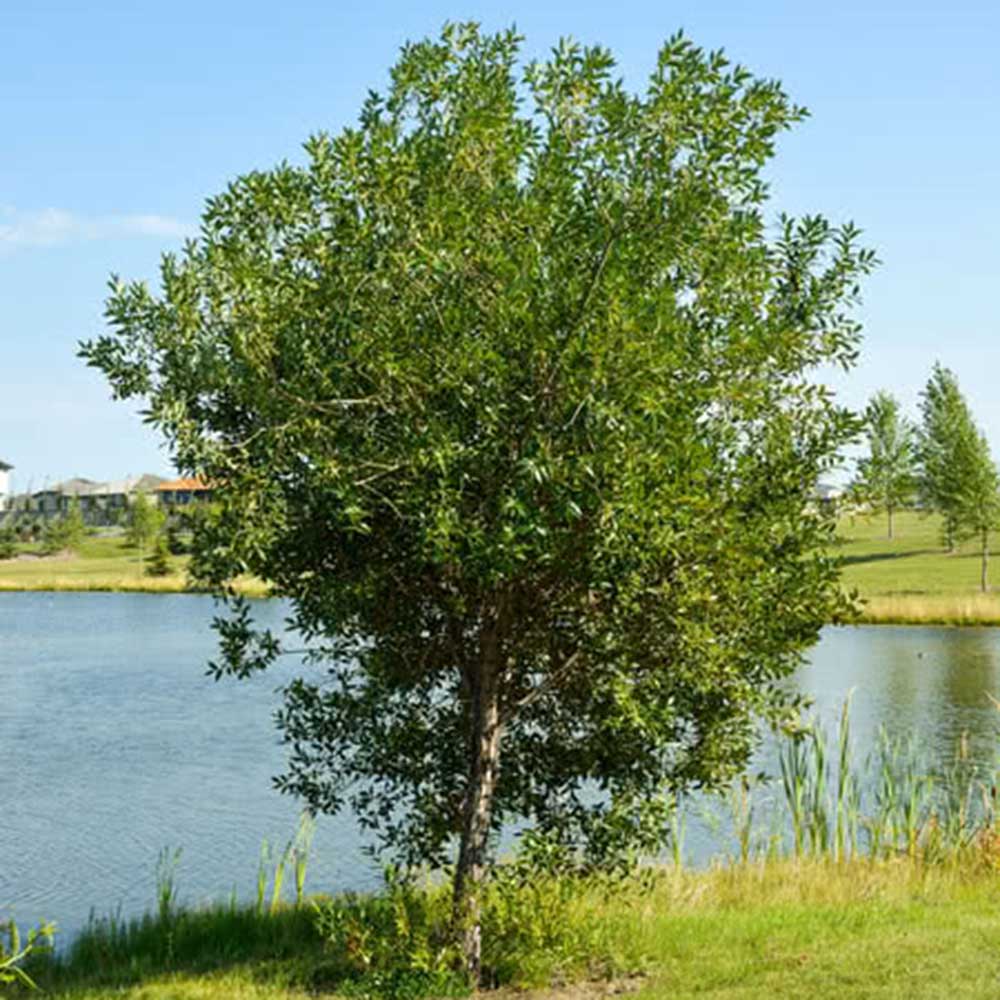Riverdene Garden Center
Laurel Leaf Willow
Laurel Leaf Willow
Couldn't load pickup availability
Salix pentandra
Laurel Leaf Willow is a fast-growing, cold-hardy deciduous tree known for its shiny, dark green, laurel-like leaves and tolerance for wet and dry conditions. It is commonly used for windbreaks, shelterbelts, shade, and erosion control. This hardy (Zone 2-6), drought-tolerant, and adaptable tree is an excellent choice for large landscapes, farmsteads, and riparian areas in Southwest Saskatchewan.
Planting & Location
- Hardiness Zone: 2-6 (extremely cold-hardy, ideal for prairie climates)
- Mature Size: 30-40 feet tall, 20-30 feet wide
- Growth Rate: Fast (up to 3 feet per year)
- Sunlight Needs: Full sun to partial shade (best growth in 6+ hours of sunlight per day)
-
Soil Preference:
- Prefers moist, well-drained loamy soil.
- Tolerates wet, clay, sandy, and poor soils.
- Drought-tolerant once established but thrives with consistent moisture.
- Spacing: 20-30 feet apart for individual trees, 8-15 feet apart for shelterbelts or windbreaks.
Watering
- Young Trees (First 1-2 Years): Water deeply 1-2 times per week to establish roots.
- Established Trees: Tolerates dry conditions but thrives with regular deep watering.
- Avoid Overwatering: Prefers moist to dry soil, but good drainage is essential to prevent root rot.
Fertilizing
- First Year: No fertilizer needed—focus on root establishment.
-
Mature Trees:
- Apply a balanced fertilizer (e.g., 10-10-10) in early spring to encourage healthy growth.
- Organic alternative: Compost or well-rotted manure in spring.
Pruning & Maintenance
- Best Time to Prune: Late winter to early spring, before new growth starts.
-
How to Prune:
- Remove dead, damaged, or crossing branches to promote strong structure.
- Can be pollarded or coppiced (cut back severely) to encourage fresh growth.
- Regular pruning helps maintain shape and prevent weak branching.
Flowers & Foliage
- Bloom Time: Late spring (May-June)
- Flower Type: Small, inconspicuous yellow catkins
-
Foliage:
- Spring & Summer: Glossy, dark green, leathery leaves (4-6 inches long)
- Fall: Yellow foliage before leaves drop
Pest & Disease Management
Resistant to: Drought, wet soil, and urban pollution
Common Pests:
-
Aphids – May cause curled leaves and sticky honeydew.
- Solution: Spray with insecticidal soap or introduce ladybugs.
-
Willow Leaf Beetle – Can cause defoliation.
- Solution: Remove affected leaves and apply neem oil if needed.
Common Diseases:
-
Cankers (Fungal Disease) – Causes bark cracks and dieback.
- Solution: Prune infected branches and improve airflow.
-
Leaf Spot (Fungal or Bacterial) – Brown or black spots on leaves.
- Solution: Avoid overhead watering and remove infected leaves.
Winter Protection
- Highly winter-hardy—no special protection needed.
- Mulching: Apply 2-4 inches of mulch around the base (not touching the trunk) to insulate roots.
- Rodent & Deer Protection: Use tree guards if animals are a concern in winter.
Landscape Uses
Great for windbreaks, shelterbelts, and erosion control
Excellent shade tree with fast growth
Tolerates both wet and dry soil conditions
Ideal for large yards, farmsteads, and rural properties
Low-maintenance and resilient
Additional Notes:
- Laurel Leaf Willow is one of the best willows for cold climates, offering strong wind resistance and a beautiful glossy-leaf appearance.
- Lifespan: 40-60 years with proper care.
- Works well as a specimen tree, in riparian zones, or in mass plantings for wind protection.
Photo courtesy of Foothills Nursery
Share


